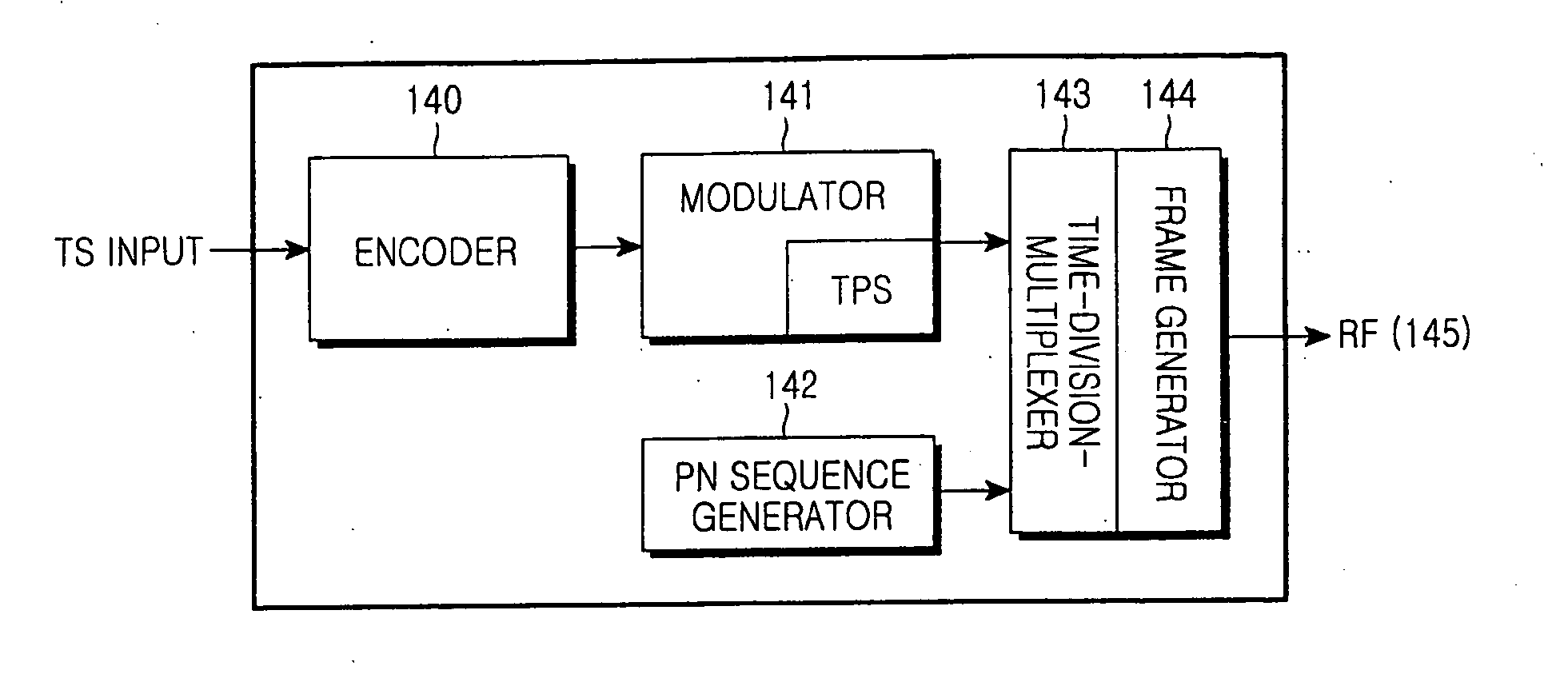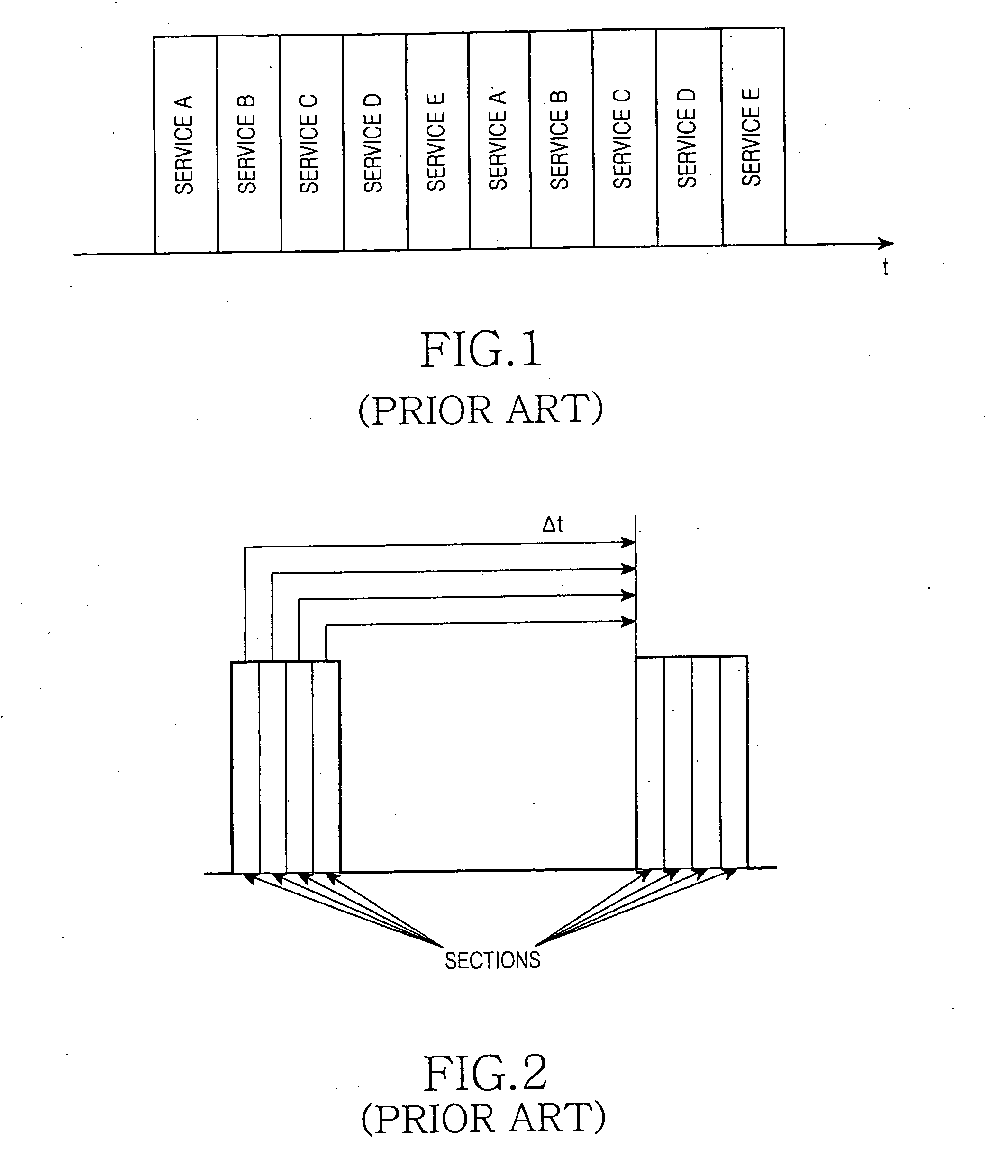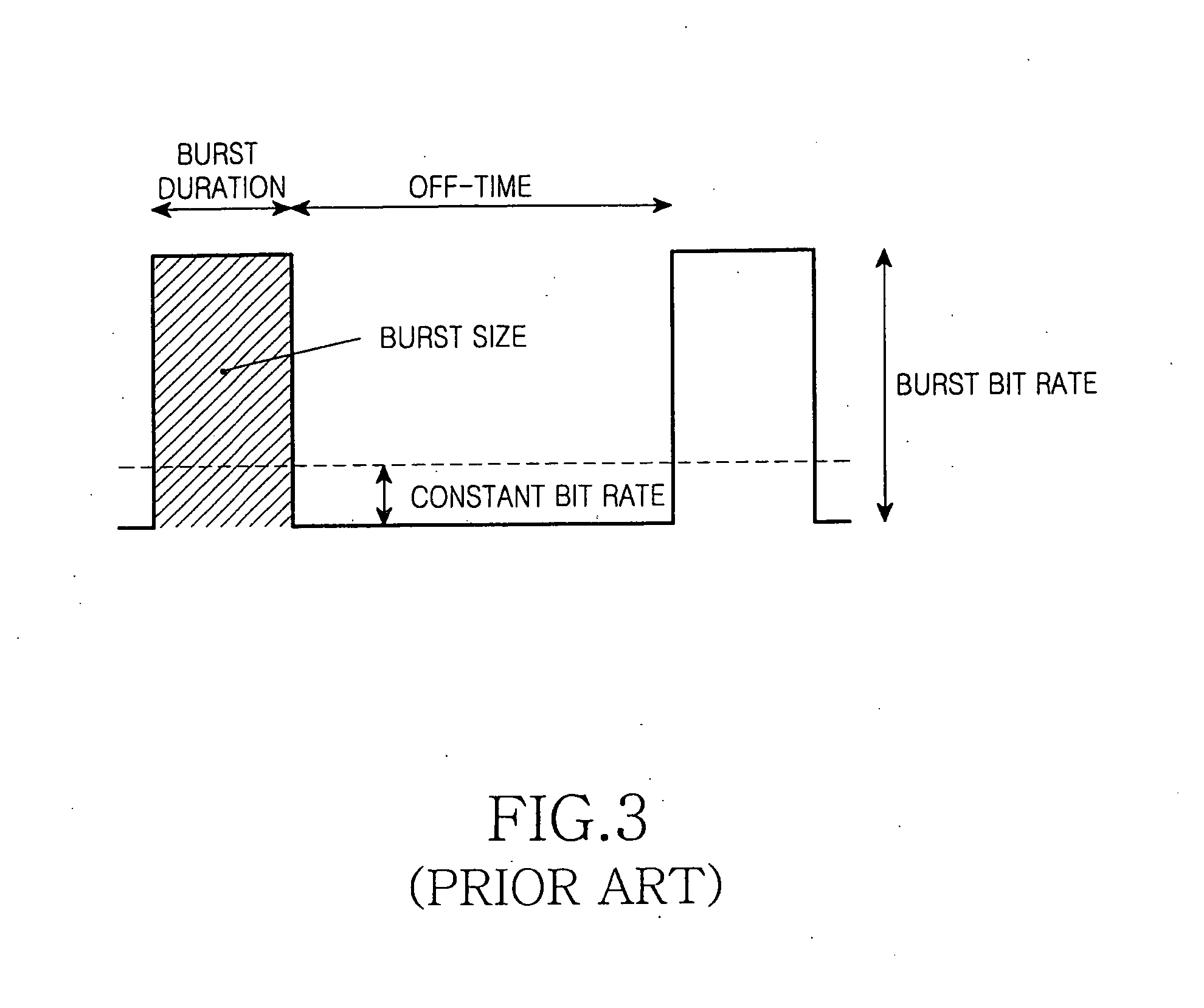Apparatus and method for transmitting and receiving data in a digital multimedia broadcasting system
a digital multimedia and broadcasting system technology, applied in the field of broadcasting systems, can solve the problems of increasing the cost of the receiver, service interruption, and developing into lightweight and less power-consuming technology for portable devices, and achieve the effect of reducing power consumption and smooth and seamless handover
- Summary
- Abstract
- Description
- Claims
- Application Information
AI Technical Summary
Benefits of technology
Problems solved by technology
Method used
Image
Examples
embodiment 1
[0101]FIG. 8 illustrates frame slicing according to an embodiment of the present invention.
[0102] Referring to FIG. 8, a frame group includes one frame group header and a plurality of signal frames, each signal frame carrying a broadcast data of an allocated service.
[0103] Each signal frame contains parameters with which to calculate the relative start time (Δt) to the beginning of the next burst of a service, i.e. nnext—frame—group, nnext—SFN, and amountsignal—frame. Each frame group header includes service burst information indicating services included in the following frame group. Each frame group further includes a parameter with which to calculate the relative time to the beginning of each service, nSFN.
[0104]FIG. 9 is a flowchart illustrating an operation for receiving an intended service in a terminal according to the present invention. With reference to FIG. 9, the service reception operation in the terminal in the DMB-H system using frame slicing will be described. While...
embodiment 2
[0114] A frame group header carries service burst information about the following N frame groups, so that there is no need for receiving every frame group header to find a desired service in the terminal.
[0115]FIG. 10 illustrates frame slicing according to another embodiment of the present invention.
[0116] Referring to FIG. 10, each frame group includes a frame group header and a plurality of signal frames, each signal frame having a broadcast data from a service allocated to the signal frame. Frame group header 1 includes parameters with which to calculate the start time of each service included in its frame group, along with service burst information identifying services included in the next N frame groups. Each signal frame includes parameters with which to calculate the start time of its service, for example, nnext—frame—group, nnext—SFN, and amountsignal—frame.
[0117] In the illustrated case of FIG. 10, the terminal turns on its receiver at the start time of service C and int...
embodiment 3
[0131] Each frame group header includes service burst information about the following N frame groups and parameters with which to calculate the relative start time of each service included in the N frame groups. In addition, Δt parameters are included within each signal frame. Therefore, the terminal receives a desired service without monitoring each frame group header since it calculates the relative start time of each service using the service burst information and parameters set in a frame group header and using the Δt parameters set in each signal frame.
[0132]FIG. 12 illustrates frame slicing according to a third embodiment of the present invention.
[0133] Referring to FIG. 12, each frame group includes a frame group header and a plurality of signal frames, each signal frame having a broadcast data from a service allocated to the signal frame. The terminal receives frame group header 1 and acquires parameters with which to calculate the start time of each service, along with se...
PUM
 Login to View More
Login to View More Abstract
Description
Claims
Application Information
 Login to View More
Login to View More - R&D
- Intellectual Property
- Life Sciences
- Materials
- Tech Scout
- Unparalleled Data Quality
- Higher Quality Content
- 60% Fewer Hallucinations
Browse by: Latest US Patents, China's latest patents, Technical Efficacy Thesaurus, Application Domain, Technology Topic, Popular Technical Reports.
© 2025 PatSnap. All rights reserved.Legal|Privacy policy|Modern Slavery Act Transparency Statement|Sitemap|About US| Contact US: help@patsnap.com



